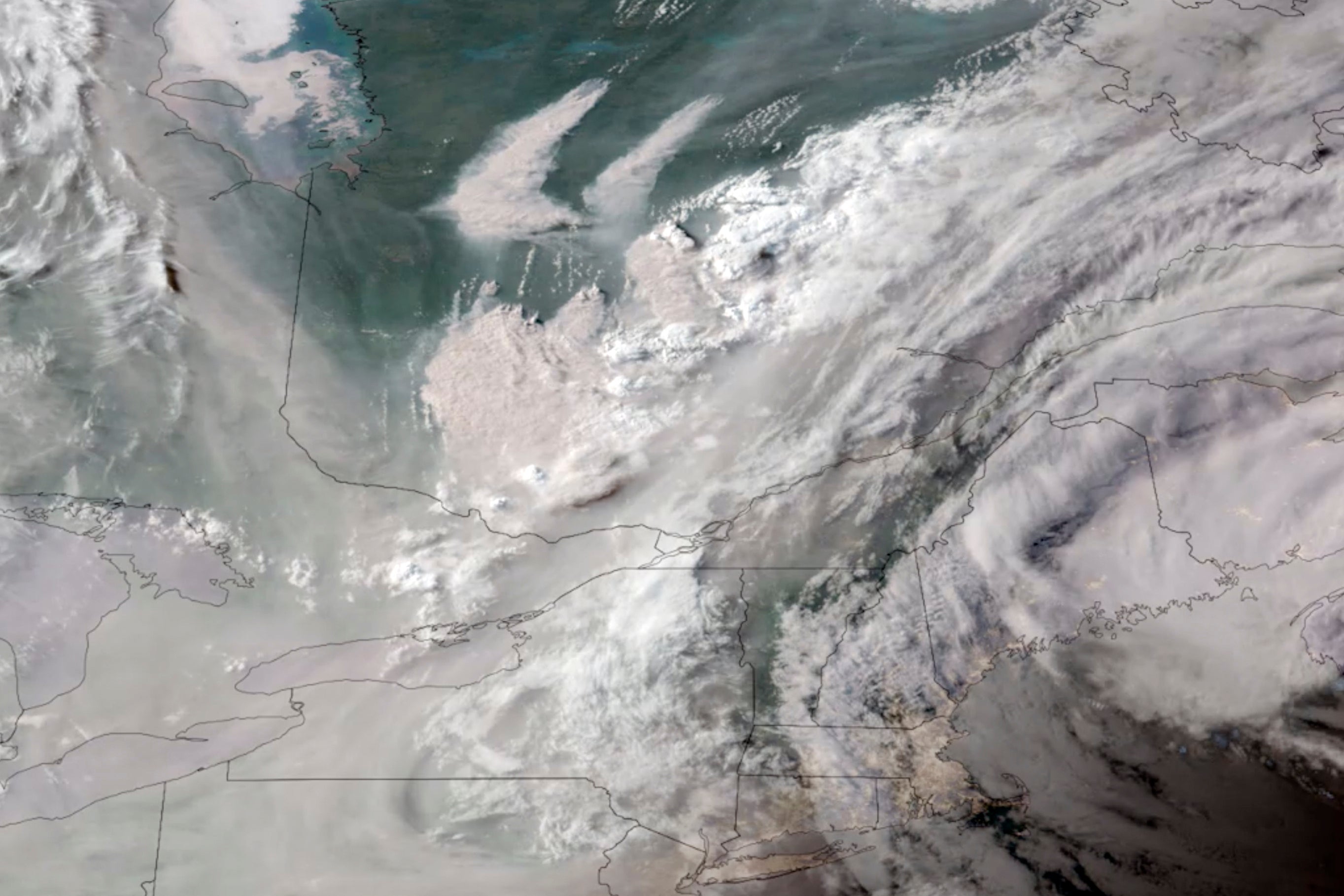Canada Wildfires: Record-Breaking Evacuation And US Smoke Impact

Table of Contents
Record-Breaking Wildfire Season in Canada
Unprecedented Scale of Fires
The 2023 Canadian wildfire season has been unlike any other in recorded history. The number and size of wildfires have far surpassed previous years, resulting in millions of hectares burned across the country. This unprecedented scale is a direct consequence of a combination of factors, including prolonged drought, high temperatures, and strong winds. The cumulative effect has created a perfect storm for extreme wildfire behavior.
- Example 1: The Donnie Creek fire in British Columbia, one of the largest wildfires in Canadian history, burned over 570,000 hectares.
- Example 2: Multiple large fires in Quebec, including the large wildfire near Chibougamau and Chapais, have forced mass evacuations and caused widespread destruction.
- Example 3: Significant acreage has also been affected in provinces such as Ontario, Alberta, and Saskatchewan.
The intense heat and lack of rainfall have created incredibly dry conditions, turning forests into tinderboxes easily ignited by lightning strikes or human activity. This unprecedented scale of burning underscores the urgent need for improved forest management practices and a greater understanding of climate change's impact on wildfire risk.
Mass Evacuations and Displacement
The sheer number of wildfires has led to mass evacuations across multiple provinces. Thousands of Canadians have been forced to flee their homes, facing significant challenges in finding temporary housing, accessing essential resources, and dealing with the uncertainty of returning home.
- Many communities have been completely evacuated, leaving residents stranded and reliant on government support and the generosity of other communities.
- Evacuees face challenges including finding suitable accommodation, securing food and essential supplies, and ensuring access to healthcare and other vital services.
- The long-term implications for displaced communities are considerable, potentially including economic hardship, emotional distress, and disruption to social networks.
- Government aid programs are in place to provide financial assistance, temporary housing, and other support services for those affected. However, the scale of the evacuations has stretched these resources thin.
Transborder Impact of Wildfire Smoke on the United States
Air Quality Degradation
Smoke plumes from the Canadian wildfires have travelled south, significantly impacting air quality across numerous US states. This transborder movement of smoke has resulted in hazardous air quality conditions, particularly in the Northeastern and Midwestern regions.
- States such as New York, Pennsylvania, New Jersey, and others experienced AQI readings that reached hazardous levels, forcing the implementation of public health alerts.
- Major cities like New York City, Philadelphia, and Washington D.C., experienced a dramatic decrease in air quality, impacting visibility and prompting health warnings.
- The persistent presence of wildfire smoke poses a serious health risk to vulnerable populations, including children, the elderly, and those with respiratory illnesses. Wildfire smoke contains fine particulate matter (PM2.5) known to cause respiratory problems, cardiovascular issues, and even exacerbate existing conditions.
Economic and Societal Disruptions
The transborder impact of wildfire smoke extends far beyond air quality concerns. The economic and societal disruptions have been significant.
- Flight cancellations and delays due to poor visibility caused significant disruptions to air travel.
- School closures and cancellations of outdoor events were commonplace as air quality deteriorated.
- Decreased outdoor recreation and tourism activity led to economic losses in affected areas.
- The health impacts of the degraded air quality put additional strain on healthcare systems.
The Role of Climate Change in Intensifying Wildfires
Climate Change and Wildfire Risk
The increasing frequency and intensity of wildfires in Canada are undeniably linked to climate change. Rising temperatures, prolonged droughts, and changes in weather patterns are creating conditions that are increasingly favorable to wildfire ignition and spread.
- Scientific evidence overwhelmingly supports the link between climate change and increased wildfire risk. Longer, hotter, and drier summers fuel the flames.
- Changes in precipitation patterns, including earlier snowmelt and more intense periods of drought, exacerbate the problem.
- The warming climate is extending the wildfire season, allowing fires to burn longer and spread farther.
Mitigation and Adaptation Strategies
Addressing the escalating threat of wildfires requires a multi-pronged approach focusing on both mitigation and adaptation strategies.
- Improved forest management practices, such as controlled burns and forest thinning, can reduce fuel loads and limit the spread of fires.
- Investments in advanced firefighting technologies and improved training for firefighters are crucial.
- Strengthening early warning systems and community preparedness plans is vital to minimize the impacts of wildfires.
- Transitioning to cleaner energy sources and reducing greenhouse gas emissions are critical for mitigating climate change and reducing the risk of future wildfires. International cooperation is essential to tackle the global challenge of climate change, reducing its influence on transborder environmental issues like wildfire smoke.
Conclusion
The 2023 Canadian wildfire season stands as a stark reminder of the devastating consequences of increasingly intense wildfires, the transborder effects of environmental disasters, and the crucial role of climate change. The record-breaking evacuations, the significant impact of wildfire smoke on US air quality, and the substantial economic and societal disruptions underscore the urgent need for collective action. We must prioritize improved forest management, enhanced firefighting capabilities, and vigorous climate action to mitigate future risks. Learn more about wildfire safety, support relief efforts, and advocate for stronger climate policies to protect our communities and our environment. Stay informed about wildfire conditions and air quality alerts, taking proactive measures to safeguard your health and well-being. The future of wildfire prevention and mitigation demands our immediate and sustained attention to the issue of Canada wildfires and their profound impact.

Featured Posts
-
 La Vie Et L Uvre D Arnarulunguaq Pionniere Inuit
May 31, 2025
La Vie Et L Uvre D Arnarulunguaq Pionniere Inuit
May 31, 2025 -
 Le Festival De La Camargue Une Immersion Dans Le Monde Maritime A Port Saint Louis Du Rhone
May 31, 2025
Le Festival De La Camargue Une Immersion Dans Le Monde Maritime A Port Saint Louis Du Rhone
May 31, 2025 -
 Ex Nypd Commissioner Kerik Hospitalized Full Recovery Expected
May 31, 2025
Ex Nypd Commissioner Kerik Hospitalized Full Recovery Expected
May 31, 2025 -
 Auction Alert Banksys Broken Heart Wall
May 31, 2025
Auction Alert Banksys Broken Heart Wall
May 31, 2025 -
 Rcn And Vet Nursing Collaboration A Plastic Glove Project Success Story
May 31, 2025
Rcn And Vet Nursing Collaboration A Plastic Glove Project Success Story
May 31, 2025
